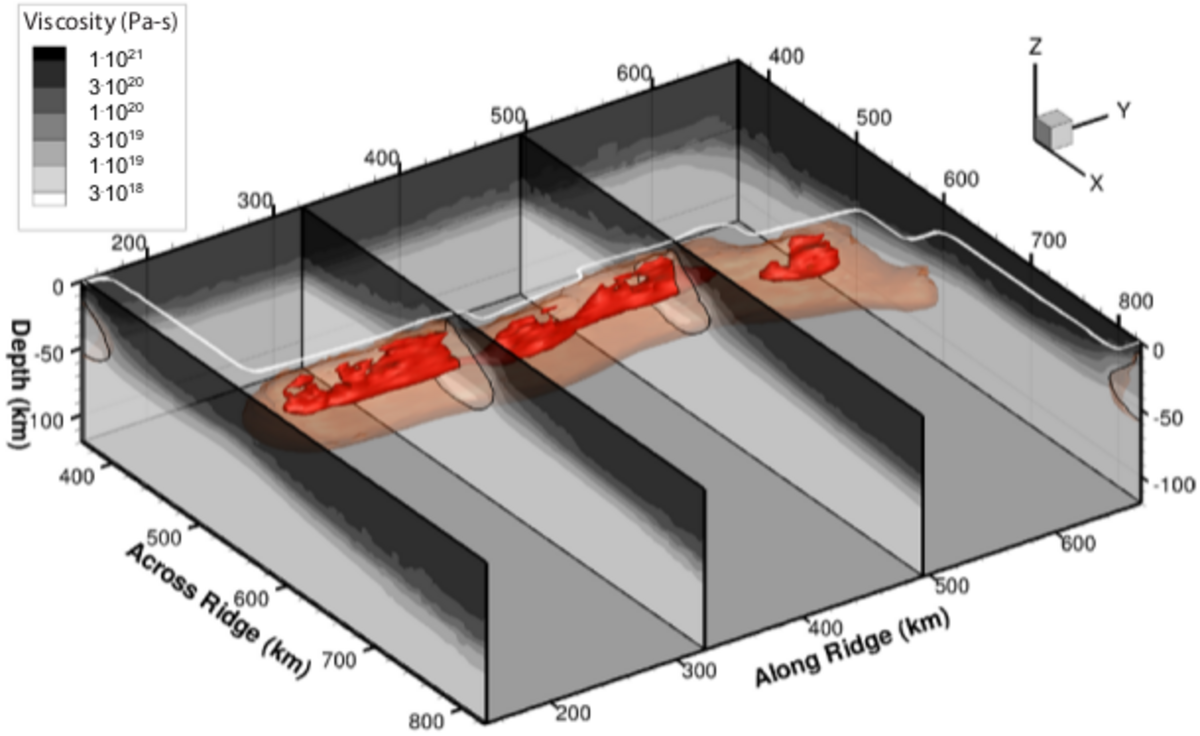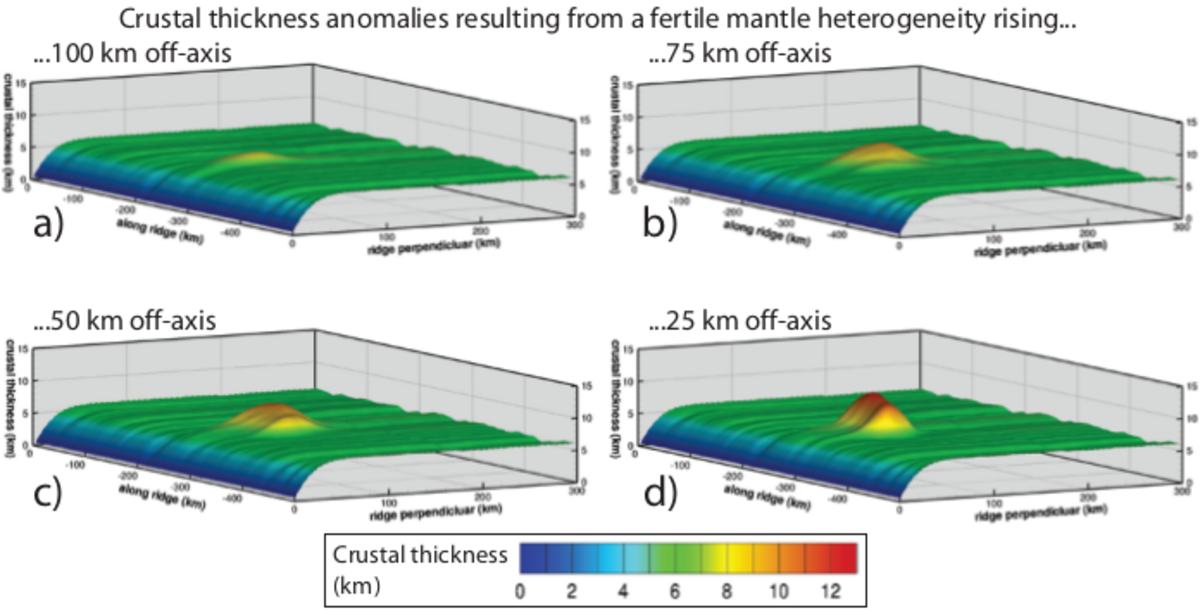DEUTSCH IN ÜBERARBEITUNG!!! - Mid-ocean ridge dynamics


Übersetzung folgt in Kürze:
Fresh oceanic crust is generated at the axis of mid-ocean ridges and transported away with the oceanic lithosphere. Spreading velocities are highly variable and correlate with the magma budget of a ridge. Fast spreading ridges as the East Pacific Rise show continuously high magmatic activity while slow to intermediate spreading ridges are more complex and undergo tectonic phases with less or no magmatic activity. An example for the latter group is the Mid-Atlantic Ridge, which reveals structurally complex settings including faults and fractures. We study geodynamic processes (e.g. hydrothermal convection, viscous flow of crust and mantle) at mid-ocean ridges using numerical models.
The East Pacific Rise is the fastest spreading ridges on Earth and very well studied. Using published data on the thermal structure in the crust and the position of the melt lens derived from tomographic data we have numerically modeled crustal accretion coupled with hydrothermal convection (Theissen-Krah et al., EPSL, 2011). Hydrothermal convection is the most important cooling process near the ridge axis and directly influences the thermal structure and the depth of the melt lens. Modeling this feedback enables us to reproduce the observed thermal structures and predict the permeability in the young oceanic crust.
Moreover we are interested in upper mantle processes: Underneath the rigid lithosphere temperatures are high enough to allow the peridotite rocks to flow viscously on timescales of 10,000 to millions of years. Below a ridge axis this upper mantle flow is directed upwards so that the rocks undergo decompression melting. Using an advanced melting model we are able to calculate wet melting of a multi-lithology mantle composition.
Questions remaining to be answered include:
- Where exactly in the mantle are melts generated and from which rock types?
- How do these melts travel from the melting region towards the surface?
- How do long-offset transform faults affect melt generation and melt migration?
- Which influence has the water content of mantle rocks on melt composition and amount of melt produced?
- How are locations of hydrothermal vent sites related to the magmatic processes forming the oceanic crust?
Our numerical models simulate the motion of lithosphere plates, the deformation of underlying mantle as well as the melting processes in the mantle. The two-dimensional (2D) models represent vertical cross-sections through mid-ocean ridges and allow to study feedbacks between certain processes and to perform parameter studies (e.g. influence of mantle temperature and spreading rate). We also use three-dimensional (3D) models, which are much more challenging as they require parallel computers and more calculation time. They are however required to study certain problems (e.g. the influence of transform faults on melt production at mid-ocean ridges).
All numerical codes in our group are written in the programming language Matlab and run on single CPUs (2D models) or in parallel (3D models) on in-house computing clusters and servers. The physical equations for viscous flow and thermal evolution are solved using the Finite Element Method, which allows to use unstructured meshes that have a high resolution in the regions of interest (e.g. near the ridge axis). The numerical formulation of the melting process takes into account a heterogeneous mantle composition as well as the influence of water dissolved in the mantle rocks. For details on the numerical method and studies on mid-ocean ridge melting processes see the Ph.D. thesis of Jörg Hasenclever (http://www.sub.uni-hamburg.de/opus/volltexte/2010/4873/).
Kontakt: Dr. Jörg Hasenclever
Referenzen
Theissen-Krah, S., Iyer, K., Rüpke, L. and Morgan, J. P. (2011) Coupled mechanical and hydrothermal modeling of crustal accretion at intermediate to fast spreading ridges Earth and Planetary Science Letters, 311 (3-4). pp. 275-286. DOI 10.1016/j.epsl.2011.09.018.


